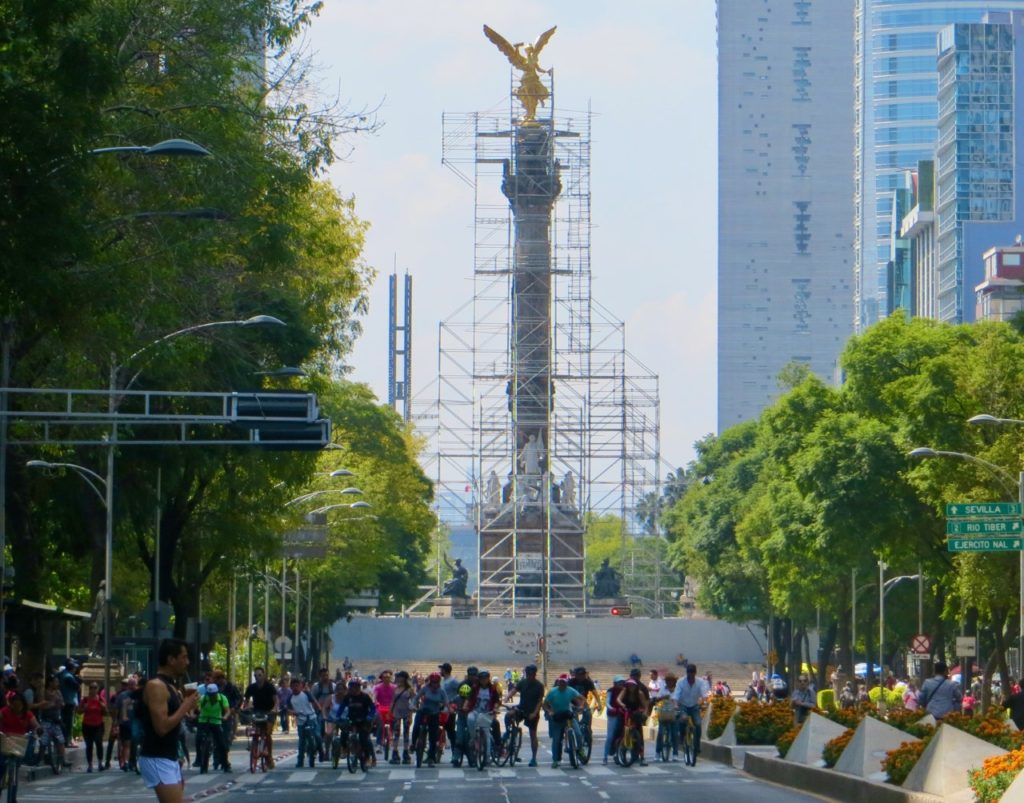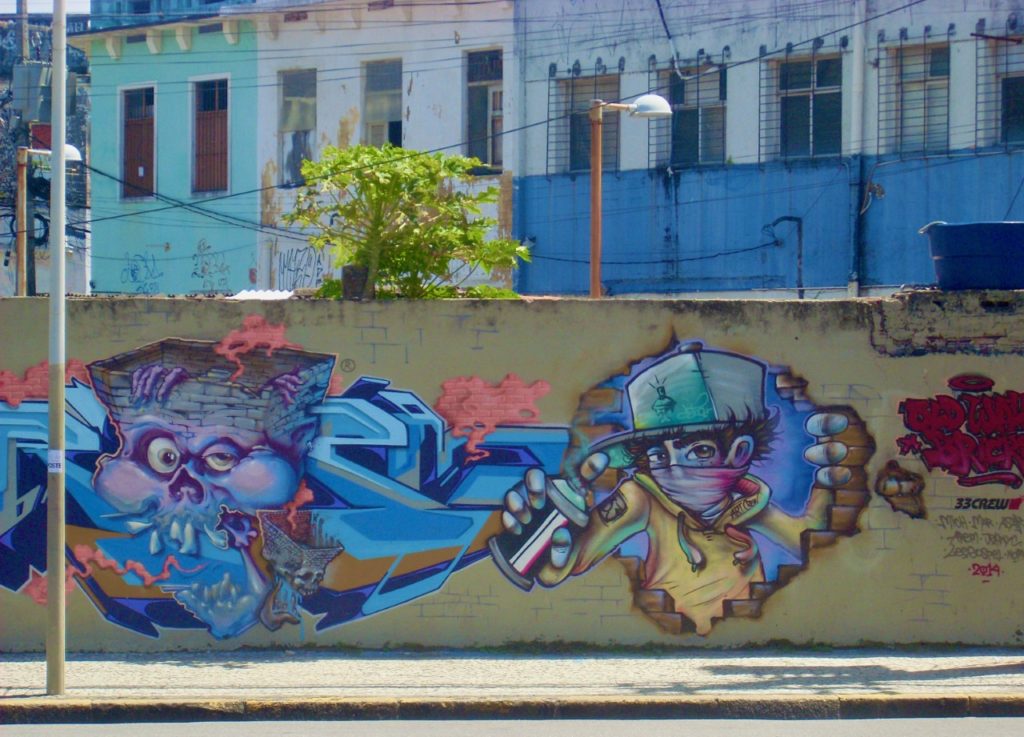This post is part of a feature on “Urban Struggles,” moderated and edited by Raúl Acosta (LMU Munich), Flávio Eiró (Radboud University Nijmegen), Insa Koch (LSE) and Martijn Koster (Radboud University Nijmegen).
This blog documents the politics of community leaders in an area selected for “urban renewal” in the center of the city of Recife in the northeast of Brazil. More specifically, it looks at how they position themselves regarding legally defined low-income residence areas (officially named as Special Zones of Social Interest, or ZEIS), informal land occupations (favelas or slums), and vertical gated communities (residential high-rise buildings). Community leaders operate as brokers between the interests of the urban poor, politicians, and real estate developers. They provide essential services in slums, while being dependent on the lower level bureaucracy for the provision and maintenance of these services (Koster & de Vries 2012). The role of community leaders as crucial brokers in Recife is heightened by the fact that they are democratically elected as local representatives of their Special Zone within a city-wide participatory program for slum governance.
I deploy the analytical lens of “occupancy urbanism” that narrates struggles for urban space and shelter “beyond policy and projects” (Benjamin 2007: 558). The perspective insists on seeing “the urban” as an open-ended site of encounter and “political possibility” (Benjamin 2014: 319). “Occupancy urbanism” is the term that Solomon Benjamin uses to describe the physical-political spaces that are opened-up when the urban poor occupy land, claim public services, or negotiate with the municipal bureaucracy (2007, 2008, 2014). As I explain further below, despite occupancy urbanism being a political practice of the poor, it has become useful for the powerful, especially for real estate developers and their allies.
As the poor’s “subversive politics on the ground” (Benjamin 2008: 723), “occupancy” urbanism challenges the mainstream developmentalist model of “global” urbanism. The latter abides by capitalist market mechanisms and private property, while assuming that cities in the “Global South” will follow the footsteps—or become satellites—of those in the “Global North”. Occupancy urbanism is not about policymaking and masterplanning to make cities “inclusive”, “smart”, and “World Class”. Occupancy urbanism is neither the arena of elite civil society that preaches “good governance” and forms of direct citizen participation without collective representation by community leaders. Central to occupancy urbanism is the analysis of “land and its historicity in its multiple logics” (2014: 318). The focus on various forms of “occupancy” and tenure arrangements forces us to move beyond homogenized versions of “the favela” (slum). Occupancy urbanism thus highlights internal diversity within “the slum” while “grounding the slum in the circuits of finance and real estate capitalism” (Roy 2011: 228).
Affluent private investors and developers have not only made their own agreements with community leaders and the municipal administration, but they have also benefited from the land occupations initiated by the poor. I follow Anaya Roy in calling this an “occupancy urbanism of the powerful” (2011: 230). Roy points at the existence of “development mafias, local criminal syndicates, often with global connections” (Weinstein in Roy 2011: 230). Their practices are interpenetrated with the occupancy urbanism of the poor in terms of claims to land, basic services, and embeddedness within the lower level municipal bureaucracy. While community leaders in Recife can definitely not be described as “mafias organized in criminal syndicates”, it is possible to observe the proliferation of community leaders with strong ties to real estate developers who negotiate with the municipal administration under the guise of “public consultation”. For these reasons, I consider these practices of community leaders as part of occupancy urbanism of the powerful.
In the following sections I present ethnographic examinations of two areas, Coque and Vila Imperial. My approaches to community leaders and the context in both settings has allowed me to further theorize the squatter approach to urban development that is taking place. I show how, in Recife, occupancy urbanism is “wielded differentially by different social classes in the context of urban inequality” (Roy 2011: 231). I argue that occupancy urbanism helps us to think about land development and urban politics as an interplay between various practices of “occupancy”. In this way we can gain an understanding of the creation of a highly exclusionary city. Before expanding on Coque and Vila Imperial, however, I first expand on Recife’s urban governance and offer a short description of a contestatory movement called Occupy Estelita.

Participatory urban governance
Often referred to as Brazil’s capital of inequality, Recife’s urban governance legacy includes a slum governance program, as well as a participatory planning program in which the municipal administration visits neighborhoods for consultation and deliberation. Both programs were initiated in reaction to massive land occupations by the poor in the 1970s; although these programs have lost much steam over time. Due to this strong popular movement, the military regime (1964-1985) had to shift their strategy from forced evictions for a “slum-free” city towards, what we would now call, “upgrading” for an “inclusive” city.
In 1983 a new local zoning law defined Special Zones of Social Interest (ZEIS), as “spontaneously existing and consolidated housing settlements, where special urban norms are established, in the social interest of promoting their legal regularization and their integration into the urban structure”. ZEIS, in a way, mediate the “formalization” of the “informal” city. Today there are 74 ZEIS in the city and more than half of Recife’s 1.6 million inhabitants lives in such a zone.
Approved in 1987, the PREZEIS (Plan for REgularization of ZEIS) regulates these “special urban norms”. As a complex bureaucratic system of laws and actors, the PREZEIS attempts to regulate land markets. PREZEIS prioritizes shelter over ownership rights, regulates maximum plot sizes, and limits relocation to the minimum required (de Souza, 2001). From their neoliberal perspective that favors unregulated land markets, urban investors and pro-business media see the PREZEIS as an impediment for land development and have always attempted to open up ZEIS areas for land valorization and beautification, especially those near the riverbanks or the oceanfront.
The real estate pressures on ZEIS areas intensifiedwhen Brazil began preparing to host the FIFA World Cup 2014. Presented to the public using the bombastic language of “turning Recife into a new Dubai” the highly controversial New Recife was approved by the municipal government. The project aims to construct more than ten high-rise buildings at the Estelita quay. Through an auction questioned by national prosecutors, in 2008, the New Recife construction consortium—made up of private investors—acquired a huge abandoned terrain owned by the federal government. There was no public consultation, the terrain was auctioned “for a banana price”—as neighboring community leaders commented—and there are allegations that one of the consortium members sponsored the campaigns of politicians in order to get the deal approved.
Such top-down “urban renewal” projects for the middle and upper classes were combined with participatory planning for the poor. This means that the construction of highways and shopping malls went together with contracts for the construction of housing estates for displaced families in ZEIS areas. However many of these estates have not been constructed, because the municipal administration has since 2013 discontinued the participatory planning program, leading to a major increase in the social housing deficit.
Occupy Estelita
In the aftermath of the nation-wide June 2013 protests (Mollona 2014), the social movement Occupy Estelita erupted on the political scene in 2014. Largely composed out of a middle-class group of university students and professors, architects and lawyers, the activists camped on the New Recife terrain to prevent the demolition of historic warehouses located on the construction site. Occupy Estelita has been described as the most important recent Brazilian social movement against the decay of participatory structures and the privatization of public space. Various lawsuits have so far prevented the construction of the New Recife skyscrapers.
Occupy Estelita mobilizations pressured the municipality to re-negotiate the project. Community leaders, both those in favor and against the New Recife project, jumped into the space opened up for re-negotiation. They were able to make claims for public services in land occupations with various shacks bordering the New Recife construction site along the historic train rails. Community leaders in Coque always remained divided however regarding the New Recife project. Nevertheless they are overall satisfied that the project’s redesign includes more space for leisure activities and social housing units as compensation. It still remains unclear, however, who can claim a right to the social housing units and where these will be constructed.
Coque’s leaders and projects
Coque is a ZEIS in the center of Recife where 40 thousand people live. It is located at a walking distance from the New Recife terrain. At the end of 2013, the current mayor spectacularly announced the construction of a canal crossing Coque as a basic sanitation project budgeted at R$18 million. This would go together with the construction of a social housing estate for affected families who lived in shacks on the edge of the canal. However, the social housing estate was never constructed and, instead of a house, the 150 affected families were offered very low compensations ranging from R$ 4,000 to R$ 38,000, amounts that are not sufficient to find housing near Coque.
At the same time the municipality had transferred several pieces of land to “third party” actors for urban development within Coque’s ZEIS borders. A large strip of land along the riverbanks was transferred for the construction of a Juridical hub. Ironically enough, this did not follow PREZEIS regulations.
Louro and Moises, both active in the local board of Coque within the PREZEIS, were very active in the successful resistance against the construction of the juridical hub. They are micro-entrepreneurs, born in the 1970s, and active in community groups involved in the “never-ending struggle” (luta eterna)for better living conditions in Coque. Louro works as an Uber driver and is better known as “Louro of the Pitbulls” for he breeds and takes care of pitbulls. Moises runs a stall (banca) in the city center with his wife where they sell clothes and accessories. He is better known as “Brother Moises” since he is a faithful member of the Pentecostal Assembleia de Deus. With other community leaders and groups in Coque, Louro and Moises stressed the risk of future resettlements that the New Recife project brings for Coque.
The main representative of Coque however stressed the employment opportunities that the New Recife project will generate for Coque’s residents. He formed part of a group of community entities in the vicinity of the New Recife construction site, including Cabanga and Coelhos, to demand participation within the New Recife consortium meetings. They made commercials to promote the project under the slogan “Good for You, Good for the City” and mobilized residents to support the New Recife project during public hearings in 2014. More recently they mobilized unemployed residents when the consortium started to collect résumés.
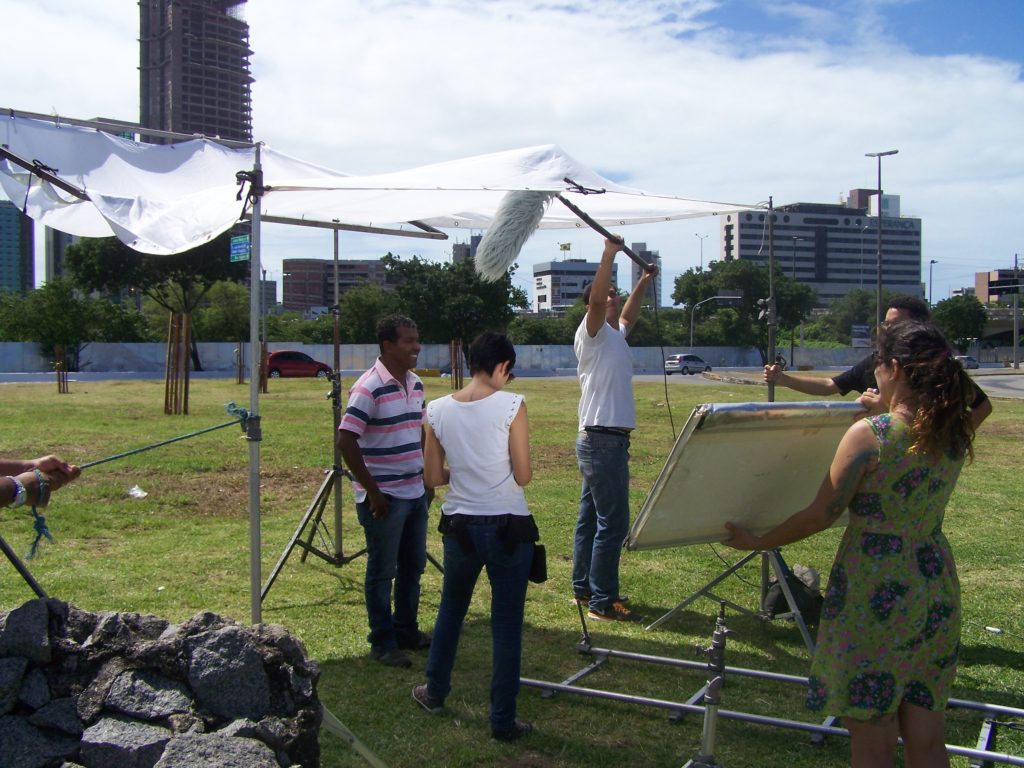
Land and housing rent prices near the new shopping malls or areas destined for vertical growth increased massively. Several new occupations emerged out of Coque. Moises and Louro initiated a new occupation just on the edge of Coque’s ZEIS parameters at the Imperial Street. Their occupation exposed the unfair compensations received by affected families of the canal in Coque. Using his own measures, yet without much exaggeration, Moises recounts:
“The compensation (indenização) is always ridiculously low. Imagine somebody living on the main street of Coque receiving R$ 40.000 as compensation, while the house is worth R$ 200.000. That is because the municipality does not pay for the land. We don’t have the land titles.”
Since the cheapest house in Coque at the time sold for R$ 50000, several families moved to distant locations outside the city center. The compensations were thus used to buy materials to construct a shack at a new land occupation. Such “occupancy urbanism” of the poor exposed high housing rent prices in Coque, despite the efforts of the PREZEIS to avoid housing rent or keep it low.
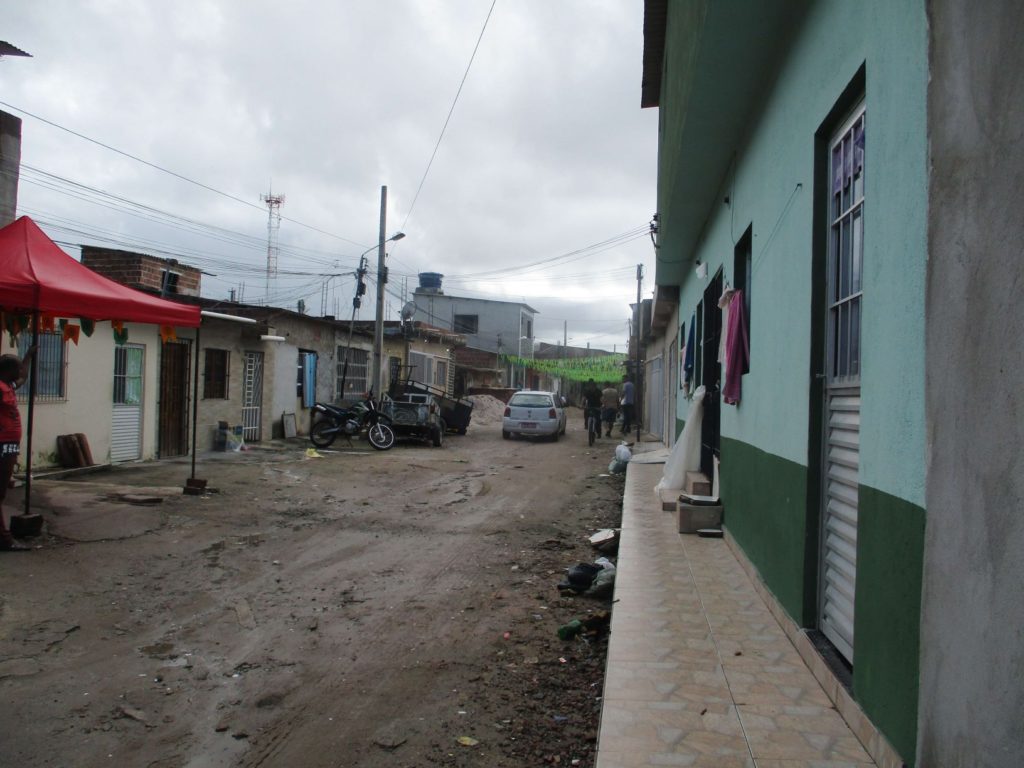
Vila Imperial
On paper the vacant terrain that affected residents of Coque occupied was on the name of the federal government (the União) as stated in the union heritage register (SPU). In practice, two enterprises built a wall around it to claim the terrain as theirs. On Labor Day 2014, the land occupation started, and it was baptized as Vila Imperial.
I visited Vila Imperial days after its initiation and saw how lots were being allocated with the support of a housing rights movement. Several wooden shacks had already been built and the number of people arriving to occupy lots was growing rapidly. Louro explained the occupation as follows:
“We occupy due to the pressures on housing in Coque, and the lack of assistance from City Hall (Prefeitura). But at any moment some project can arrive for the terrain. You will see how people who have invested in constructing their house lose everything again. It is a vicious circle.”
Stories of land occupations such as Vila Imperial are often contradictory and sensitive. Political rivals of Louro and Moises would speak about invasões “illegal invasions” (of private property). They see it as a form of opportunism or urban speculation of the “better off” poor who already have secured housing in Coque. They argue that the shacks are rented out again, only there to wait for resettlement money, or a speculative strategy to receive an apartment in a social housing estate. Such discourses were used by many of those in favor of the New Recife project, as justification for evictions. Louro explained the conflicting views as follows;
“People from Coque and Vila Imperial gave more body to the Occupy Estelita movement. We occupied the streets and pressured the municipality, and they supported our struggles. They for example helped us stop the eviction of 58 families through legal and design support. That is when other leaders in Coque started to call us terrorists and mentally deficient people who want to obstruct the development of the city. There now exists a big lie about opportunism at Vila Imperial intended to discredit the occupation and its organization. They say that so-and-so (fulano o tal) bought 50 lots at the occupation to rent out shacks. However, the pioneers at Vila Imperial know that nobody received more lots than anyone else.”
Four years later, Vila Imperial had electricity, water supply, and instead of wooden shacks, there were now brick houses, some of them with two floors. The land occupation is now very much considered part of Coque, yet it is not included in the ZEIS parameters. I walked through Vila Imperial with Moises again and discussed the election of Bolsonaro who had called movements that occupy land “terrorists” (Albert 2018, Eiró 2018), as well as the beginning of the sale of the first New Recife apartments, a sign that the construction will soon begin. He suddenly climbed a shaky wall and revealed:
“See those warehouses? Four upscale apartment blocks will be erected there. Nobody called us to say that this will happen, and still, it is all approved by Recife’s Urban Development Council. [NB: The majority of seats are occupied by delegates who represent the real estate sector.] The only thing that we don’t know is when they officially start and end the construction. This will have a major impact on Coque and Vila Imperial. Imagine how many cars that would be! For sure the main street of Coque will need to be widened at some point.”
Yet again an upscale project that pressures Vila Imperial and Coque. Now one that is on a stone-throwing distance. Without ZEIS protection, residents of Vila Imperial remain in constant fear of “the vicious circle”—of losing a house without sufficient compensation and starting all over again. With the decay of participatory structures and the deepening of an urban development model where investments for the poor are only “compensatory” or alleviative (paliativo), the political spaces in which community leaders like Moises and Louro can operate have become increasingly slim.
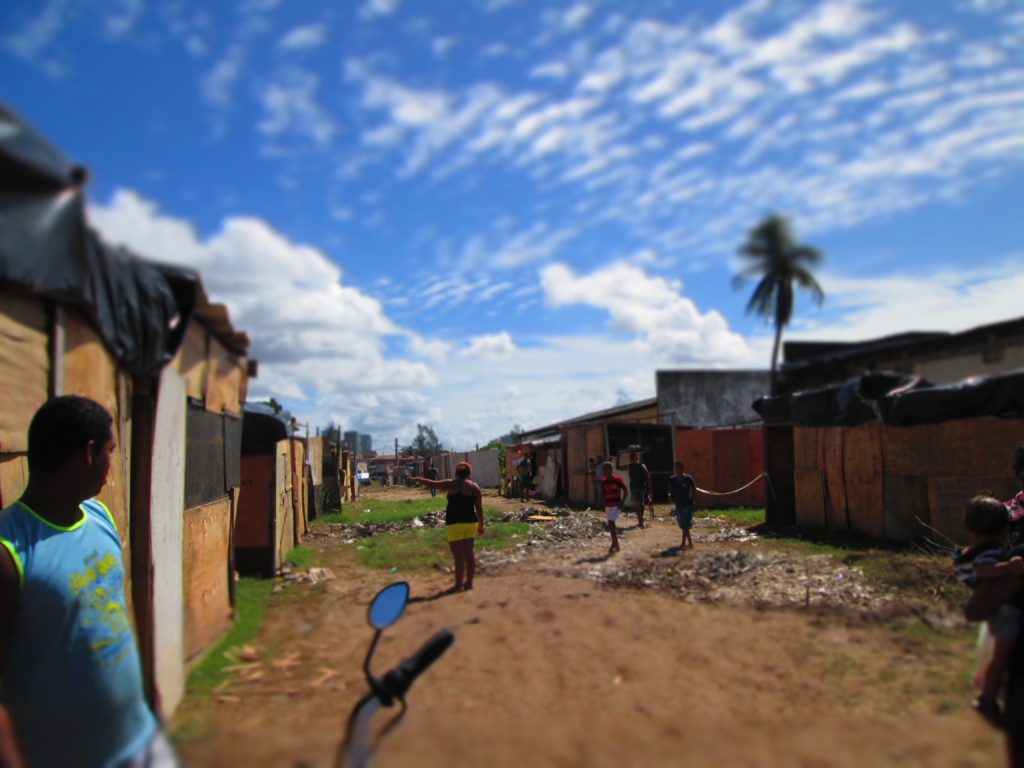
Rethinking occupancy urbanism
Occupancy urbanism explains land occupations such as Vila Imperial and how Moises and Louro “run after things” for this “informal settlement” by claiming land and housing. At the same time, occupancy urbanism makes visible how “formal” planning such as the New Recife project similarly operates in a legal area of opaque negotiations between community leaders, political parties, developers and the municipal bureaucracy. Following Roy, I have the called the latter “occupancy urbanism of the powerful” (2011: 230).
Can we then continue to perceive occupancy urbanism as a politics of the poor that challenges neoliberal urban development projects? I have shown how Moises and Louro experience what can be called “occupancy of the powerful” as encroaching on Coque and Vila Imperial. They continuously struggle against evictions and very low resettlement compensation. This lies in stark contrast to the fact that luxury buildings get constructed through covered-up illegal means. Can we then continue to assume that Moises. Louro, and “informal” land occupations have a specific form of political agency—in and of themselves—that is able to counter occupancy urbanism of the powerful and “global” urbanism?
Therefore, I wish to caution against over-reading occupancy urbanism as the political agency of the poor. In Recife, the “occupancy urbanism by the powerful” has gained much political space as witnessed in the increased role of community leaders with close ties to the real estate developers and municipal administration. Rather than a threat or disruption to “global urbanism, land occupations and ZEIS are used as justification for the construction of skyscrapers by promising employment and social housing. And yet, the occupancy urbanism of the poor draws on collective memories of the popular movement in the 1970s in their struggles against dispossession. It must be stressed that this resulted in the PREZEIS, and that these were struggles for belonging to the city, as against resettlement to the periphery or relocation to a social housing estate.
This project has received funding from the European Research Council (ERC) under the European Union’s Horizon 2020 research and innovation programme (grant agreement No. 679614).
Sven da Silva is a PhD Candidate in Anthropology and Development Studies at Radboud University (The Netherlands), and member of the ERC-funded research project “Participatory urban governance between democracy and clientelism: Brokers and (in)formal politics”.
References
Albert, Victor. 2018. “Brazil’s Homeless Workers’ Movement is an assertive social work organization” FocaalBlog, 30 November. www.focaalblog.com/2018/11/30/victor-albert-brazils-homeless-workers-movement-is-an-assertive-social-work-organization
Benjamin, Solomon. 2007. Occupancy Urbanism: Ten Theses. Sarai Reader 07(Frontiers): 538-563. https://sarai.net/sarai-reader-07-frontiers/
Benjamin, Solomon. 2008. Occupancy urbanism: Radicalizing politics and economy beyond policy and programs. International Journal of Urban and Regional Research 32(3): 719-729. DOI:10.1111/j.1468-2427.2008.00809.x
Benjamin, Solomon. 2014. Occupancy urbanism as political practice. In: The Routledge Handbook on Cities of the Global South, 331-343.
de Souza, Flávio A.M. 2001. Perceived security of land tenure in Recife, Brazil. Habitat International 25(2): 175-190.
Eiró, Flávio. 2018. “On Bolsonaro: Brazilian democracy at risk” FocaalBlog, 8 November. www.focaalblog.com/2018/11/08/flavio-eiro-on-bolsonaro-brazilian-democracy-at-risk
Koster, Martijn, and Pieter A de Vries. 2012. Slum politics: Community leaders, everyday needs, and utopian aspirations in Recife, Brazil. Focaal (62): 83-98. doi:10.3167/fcl.2012.620107
Mollona, Massimiliano. 2014. “The Brazilian ‘June’ revolution: Urban struggles, composite articulations, and new class analysis,” FocaalBlog, October 28, www.focaalblog.com/2014/10/28/massimiliano-mollona-the-brazilian-june-revolution-urban-struggles-composite-articulations-and-new-class-analysis
Roy, Ananya. 2011. Slumdog cities: Rethinking subaltern urbanism. International Journal of Urban and Regional Research 35(2):223-238. DOI:10.1111/j.1468-2427.2011.01051.x
Cite as: da Silva, Sven. 2020. “Special Zones, Slums, and High-rise buildings: Community leaders between “occupancy urbanism” of the poor and the powerful in Recife, Brazil.” FocaalBlog, 31 July. www.focaalblog.com/2020/07/31/sven-da-silva-special-zones,-slums,-and-high-rise-buildings-community-leaders-between-occupancy-urbanism-of-the-poor-and-the-powerful-in-recife-brazil/


